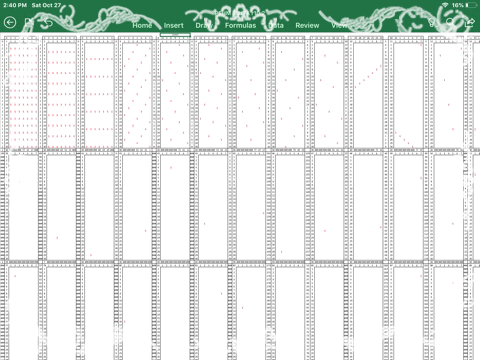-
Posts
511 -
Joined
-
Last visited
Content Type
Profiles
Forums
Events
Everything posted by TakenItSeriously
-

Are relativistic effects directional?
TakenItSeriously replied to TakenItSeriously's topic in Speculations
I don’t completely agree with his results. That’s why I’d like to use a trusted third party results in the Wikipedia example. -

Are relativistic effects directional?
TakenItSeriously replied to TakenItSeriously's topic in Speculations
I agree. (respectfully) To keep things relatively simple can we use the Wikipedia example so that the problem has a known reliable baseline that we can check results to: https://en.wikipedia.org/wiki/Twin_paradox?wprov=sfti1 This example problem uses a proper distance of 4 light years each way and traveling at 80%c. If you like, I could outline the solution to save you some time or if you’d prefer to adapt your solution that’s fine as well. -

Are relativistic effects directional?
TakenItSeriously replied to TakenItSeriously's topic in Speculations
I’d like to keep this thread focused on the Janus discussion if you don’t mind which I left off here: -

Are relativistic effects directional?
TakenItSeriously replied to TakenItSeriously's topic in Speculations
I don’t see any links posted by Janus. However, your reply has just saved me some time in replying back to Strange. He had stated that relativistic effects were true in the horizontal and vertical access and I was going to argue that assumption was in error. I honestly can’t say anything about what I can distinctly remember about SR at least in regards to directionality. I first learned about it in the early 70’s when I was a child and my memories about it are spread across the entire range of time until now. Edit to add: Scratch that. I can remember learning about SR in school years later. The teacher had stated “length contraction in the direction of travel” and I always interpreted that as literally only in the direction of a moving ship. I also recall asking him if he meant to say that the dimension of space in the direction of travel not just the length of physical objects. We disagreed on that point and I quietly conceded that he was wrong because it does no good to argue with your teacher in grade school. -

Are relativistic effects directional?
TakenItSeriously replied to TakenItSeriously's topic in Speculations
I agree. Again I agree. I wasn’t trying to assert that time must be running faster. I was only trying to assert that you can no longer link time dilation as the cause for the relativistic blue shift. You mean classical distance effect? In that the distance is decreasing classically due to motion? I wasn’t trying imply anything about that. I was trying to say that relativistic blue shift must be due to length contraction of the distance. i.e. from Alices point of view at the turn around, her distance to the Earth is 0.6*4 ly or 2.4 ly due to length contraction. Ok, here is where it gets super tricky.and deviates from what most people assume is happening so please try to keep an open mind. From Alices point of view, is time still dilated on the return leg when Alice is now approaching Bob? Empirically, we can’t conclude this because both clocks now seem to be running faster so I’m saying that time is not progressing faster or slower. I’m saying that length contraction is nothing more than time dilation except as seen from the other side. Again, relativistic redshift is due to time dilation of the frequency. Relativistic blueshift is due to length contraction of the wavelength. Edit to add: If this has got you thinking, there are more consequences to it that can resolve a whopping mystery, but you kind of need to accept this step first. -

Are relativistic effects directional?
TakenItSeriously replied to TakenItSeriously's topic in Speculations
I’ll need some time to reply to this but will reply to Janus first. In the mean time, how do you split up quotes in a reply. I can’t recall off hand as it’s been a long time since I last posted here. Never mind, I figured it out. I need to grab a bite and run some errands but I’ll try to reply today. Please don’t lock this thread until I get back. -

Are relativistic effects directional?
TakenItSeriously replied to TakenItSeriously's topic in Speculations
Who’s derivation? can you provide a link? If I’m not mistaken, I believe the direction of travel quote was from Einstein himself. I cant recall exactly my source for this belief however length contraction is always stated in terms of the direction of travel. I don’t think that Einstein was prone to making mistakes in hidden assumptions in language given the theory itself which is inundated with such intuitive traps. -

Are relativistic effects directional?
TakenItSeriously replied to TakenItSeriously's topic in Speculations
Thanks, please refer to my reply to Janus. I’ve never seen anything that shows that time dilation is independent of direction. as far as length contraction goes, I agree. Length contraction does happen in the direction of travel. Not that length contraction happens in both the direction of travel and opposite to the direction of travel. -

Are relativistic effects directional?
TakenItSeriously replied to TakenItSeriously's topic in Speculations
I agree that the relativistic component of relativistic redshift is caused by time dilation.That much seems to be logically self evident. I don’t agree that time dilation can explain the relativistic component of relativistic blue shift. Remember, time seems to be speeding up on the return leg and I think you would agree that time dilation never speeds up no matter how you look at it. Baring time dilation, this analysis no longer has a causality attached to it. I agree with your math but I would posit that the causality for it is due to length contraction not time dilation. i.e. wavelength is decreasing due to length contraction not that frequency is increasing due to time dilation. -

Are relativistic effects directional?
TakenItSeriously replied to TakenItSeriously's topic in Speculations
Thanks for replying. This is what I’m saying. You need to assign a negative sign to the approaching direction which suggests directionality. I will address your previous analysis shortly. -

Are relativistic effects directional?
TakenItSeriously replied to TakenItSeriously's topic in Speculations
As far as I’m aware, nothing in SR states that time dilation or length contraction is not directional. It’s only an intuitive assumption that it’s not. Wouldn’t you at least agree that relativistic doppler effect is directional? -

Are relativistic effects directional?
TakenItSeriously replied to TakenItSeriously's topic in Speculations
I’m not contending that special relativity is wrong, only that our understanding of it is not fully realized. Nothing in my post is inconsistent with the theory that Einstein discovered. -

Are relativistic effects directional?
TakenItSeriously replied to TakenItSeriously's topic in Speculations
This discussion is theoretically based not experimentally based. I don’t have the bank roll to fund an experiment of space ships that travel at relativistic speeds, not that we have the technology to do that anyway. -

Are relativistic effects directional?
TakenItSeriously replied to TakenItSeriously's topic in Speculations
I agree, that’s what we learned in school but I’m positing something different and your reasoning is therefore circular. -
We know that relativistic doppler effect is directional in terms of relative motion. That is to say that light becomes red shifted when it’s source is receding away from us while light becomes blue shifted if the light source is moving towards us. But what about time dilation and length contraction? Could it be that time dilates only in a moving frame that is moving away from us? and that length only contracts in the sense of a frame that is moving towards us? This was one of the important consequences I had mentioned in my explanation of the Twin Paradox which I had posted here: In short, if you do the math, we can only say that from Bob’s perspective on Earth, time appears to be dilated due to relativistic redshift. That is to say that if the light we are observing is a powerful radio transponder that pings at 1Hz, then from Bob’s perspective, he receives only 1 ping every 3 seconds due to relativistic redshift. Now, this is not just due to time dilation because, as we know, relativistic redshift includes normal redshift plus the relativistic component based on the Lorentz transformation. If we calculate time dilation alone at 80% of c the Lorentz factor (α) is 0.6 so time is only reduced to 60% of proper time. That’s all well and good, but when we observe the ship on the return leg, Bob receives 3 pings per second! as if time were somehow speeding up in the moving frame which we know is not possible. We already know that time dilation can never be speeding up beyond proper time and length contraction can never be expanding beyond proper length. So what relativistic effect is responsible for this relativistic blue shift? I would posit that length contraction is what causes the waves to compress beyond that due to normal blueshift. Another words, we know that information must be conserved and of course waves are basically information. So we know that waves (or pings) cannot just be added to or removed from the streaming radio signal. I know that the pings sent at 1 Hz are not waves but a composite of many waves but for all intents and purposes, we can think of them like light waves with a frequency of 1Hz. We also know that the streaming radio signal is mostly still in the space between Earth and the ship as it approaches us as waves in space. So my point is that if the distance between Earth in the approaching ship is length contracted, then so must be the wavelength of those waves. The bottom line is that time dilation causes the relativistic redshift for receding light sources in terms of emitting fewer waves per second and length contraction causes the relativistic blue shift in terms of a shorter wavelength.
-
This wasn’t my idea but Edward Snowdens which I heard on an episode of Startalk and it just struck me as a very compelling argument. He posited that an intelligent species would have a relatively small window of broadcasting radio signals in the clear before they started encrypting all their radio communications to be indistinguishable from background noise as a matter of course. Personally I can’t think of any reason why this couldn’t be true and it makes perfectly good sense. It also makes me think that it may already be happening but that’s besides the point. What do you guys think?
-
Each pattern designates the locations of all multiples for a given prime factor. For example the first pattern designates the positions for all multiples of 2, the next matrix reveals the positions for all multiples of 3 and so on for all given prime factors, for a given level of the matrix. The number of prime factor patterns required depends upon the range of numbers or the level of the matrix that you wish to look at. Please define your variables and double check your use of brackets as there seems to be some redundancy included.
-
I completely agree that patterns are important in number theory but, in this particular case, rather than looking for patterns indiscriminately and then trying to explain them after the fact, I had first deduced that the harmonic patterns must exist based on the periodicity of prime factors and the resulting patterns had confirmed those deductions. Two points: I discovered an interesting symmetry depending on whether a PFHM starts with 0 or starts with 1. Try the following excercise: Take any PFHM starting with 1 and highlight the prime numbers to reveal the harmonic patterns. You will note that a symmetry exists in the x axis with the exception that the first column on the left is a prime column while the second from the last column is a prime column. When we take the same matrix only start it with 0 instead of 1 the assymetry swps such that it is the second column from the left that is prime while the last column on the right is prime. The second point is that when using a PFHM, one needs not begin at the beginning every time such as with a number seive. That is one of the huge advantages of using a matrix. You can start with the first matrix, the second matrix or the millionth matrix e.g. for a 30x7 matrix we can calculate the primality for the ranges: 1-210, 211-420, or 209,999,791-210,000,000 without needing to calculate the primality of all preceding matrices first! for instance here is the primality of the millionth matrix which I derrived directly without first derriving all 999,999 preceding matrices. Note that there may be errors involved since it did require creating a composite of 1,698 prime factor patterns. I’ve been meaning to look into patterns of semi-primes within a PFHM, though I haven’t had the time to look into it yet. I will post any new results regarding semi-primes if I discover any in the future, however, you should note that my first priority at the moment is to find a method for unbounded data compression. Thanks, I appreciate it. The key to understanding how to create a PFHM are the formulae that are needed to automatically derive the primality patterns within Excell for which there are too many details, in general, to discuss easily within this forum. I may post pics showing the formulae of certain key cells at a later time.
-
Just because it’s kind of cool to look at here is an expanded view of the animated 30x7 PFHM stack: Figure 2: An expanded view of the prime factor patterns. Above is actually only a partial view of a large array of prime factor patterns in Excel. It starts in the upper left with the harmonic patterns for primes 2, 3, 5, & 7. Each row actually contains 38 PFPs and the number of rows can extend indefinitely until Excel runs out of memory and crashes. Initially, I tried to include enough prime factors to define the primality up to the millionth matrix (numbers from 1 up to 210,000,000) which requires 1700 prime factor patterns for the primality to be fully defined. Oddly it was at the millionth matrix when Excel started crashing. The animation represents matrix levels from 10,000 to 10,033 for 33 frames. I chose 33 frames so that the fifth prime (11) would appear to be smooth when displayed in a repeating loop.
-
I thought you guys might find this interesting. Adding Time to a 2D Prime Factor Harmonic Matrix to demonstrate the “behavior” of standing vs moving prime factor “waves” Previously I had introduced the Prime Factor Harmonic Matrix which showed that prime factors behaved like waves or specifically 1 dimensional waves that either behave like moving waves or standing harmonic waves within a 2 dimensional matrix of natural numbers. A PFHM is simply any matrix of natural numbers that is dimensioned according to a primorial. Paul Ikeda's answer to What’s the significance of prime numbers in physics and nature? Finding large Primes using Standing Wave Harmonics When this is done, the pattern of prime factors that make up the primorial behave like standing waves while prime factors that are not part of the primorial would behave like moving waves. In order to better demonstrate this behavior, I added the dimension of time to a 2D 30x7 PFHM which is orthoganal to the plane. Another words I created an animated gif which shows a progression of matrices level by level. i.e. 210 = 2x3x5x7 1-210 211-420 421-630 ... Figure 1: A series of 30x7 matrices of natural numbers such that their prime factors are distributed periodically throughout the matrix. The slot on the left represents the factors of prime number 5, the second shows the factors of 7, the third shows the factors of 11 and the fourth shows the factors of 13. Each frame of the animation shows a progression of levels in the matrix. Note that since 5 and 7 are both factors of the primorial 210, they never move or they behave like standing waves while all larger prime factor patterns each propagate at a different rate or a different “frequency over time”.
-

Finding large Primes using Standing Wave Harmonics
TakenItSeriously replied to TakenItSeriously's topic in Mathematics
Yes, that’s exactly right. A seive is one dimensional which is why they always need to be started from 0 and very innefficient in terms of storage space while the matrix can be two or three dimensional and the base can be a primorial of any size. The larger the base, the more composite number collumns are segregated out and the greater the probability that the remaining numbers are either prime or semi-prime. There are a number of huge advantages over a number sieve. Thanks for the link. It does indeed appear to be based on the same principles though I never intended it to be used as a method for faster prime factorization. My aim, at least in part, was to find a method for a faster primality test for discovering large primes, especially Mersenne primes. I can see how they might succeed using quantum probability analysis to speed up the factorization process though. Prime factors are harmonic which was the basis of the PFHM after all. -
Yet Relativistic Redshift isn’t accounted for, for galaxies that are receding at speeds appraching the speed of light? That suggests that time dilation isn’t accounted for at those speeds either. Time dilation will cause luminosity to dim which could have easily been overlooked just as length contraction was overlooked for the cause of time deviation in the Twin Paradox. What may seem obvious in hind-site is not obvious in fore-site. Please trust me on this. It has been the lifelong bane of my existance.
-
I’m not following the basis of your argument. Luminosity which is used to determine distance is essentially the same source and time that relativic redshift came from. So how could light be an invalid source of information in the case of redshift, but be a valid source for distance? In fact light is essentially the only source of information used in this case. It seems as though you are just trying to make the claim that Special Relativity is wrong.
-
Since we can measure the doppler shift, relativistic or otherwise, of a receding galaxy why can’t we use the equation for calculating the Relativistic Doppler Factor (fs/fo) which I will call r for ratio, to derive the galaxies recessional velocity? fs/fo = √[(1+β)/(1-β)] r = fs/fo r = √[(1+β)/(1-β)] (1+β)/(1-β) = r² β+1 = r²(1-β) β = r²-r²β-1 r²β+β = r²-1 β(r²+1) = r²-1 β = (r²-1)/(r²+1) where: fo is the frequency that an observer sees fs is the source frequency that we can find from its spectrographic footprint β = v/c r = fs/fo If the galaxy is in redshift then r > 1 ⇒ 0 < β < 1 If the galaxy is in blueshift then r < 1 ⇒ 0 > β > -1 The negative velocity only means that the objects are moving closer together instead of further apart so we can see that the absolute speed should never exceed c according to Special Relativity.




